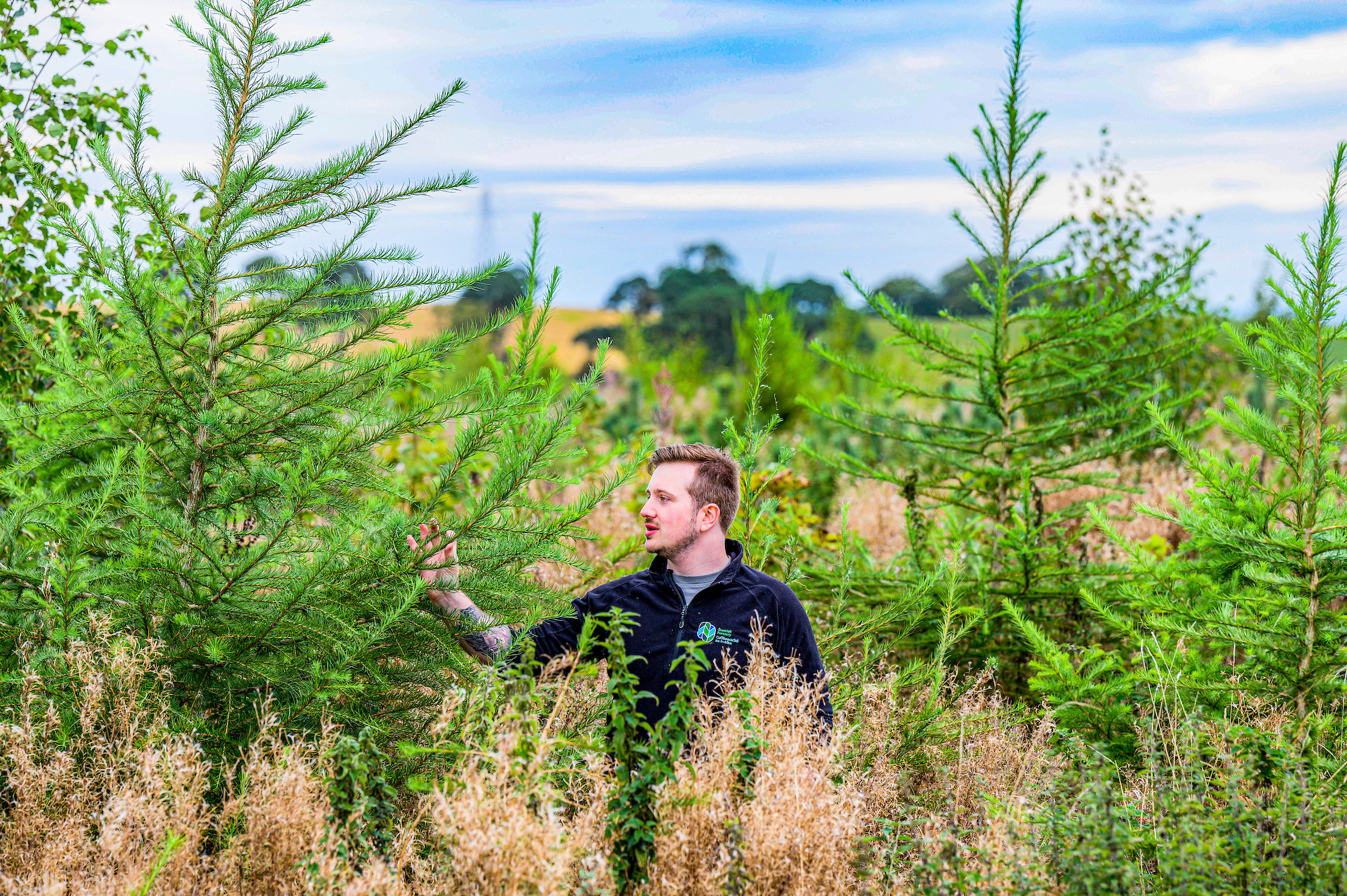28 Sep 2023
Blog: The Woodland Carbon Code - an opportunity for farmers
In Scotland, around half of the applications for new woodlands are for projects around 20 hectares or below in size, with many of these being from farmers.
This interest in integrating trees into their farming businesses is bringing many benefits. This can include providing shelter for livestock, a potential timber income for the future, woodfuel supplies, and of course boosting the farm’s biodiversity and tackling climate change.
There is another option for farmers which can bring in additional income – registering their new woodland through the Woodland Carbon Code.
For #ScotClimateWeek, we asked Pat Snowdon, Head of Economics and Woodland Carbon Code at Scottish Forestry, what’s in the Code for farmers.

Hi Pat, in a nutshell, what is the Woodland Carbon Code?
It is an internationally endorsed standard that builds trust among carbon credit buyers, farmers, land agents and others, to show that carbon credits from planting woodlands are genuine and permanent, and make an additional contribution to our net CO2 emissions reduction targets.
In other words, it’s a way for farmers to generate carbon credits with confidence that they are doing this in the right way.
How does it work?
Farmers can validate their new woodlands through the Woodland Carbon Code and this allows them to generate carbon units which they can either sell to companies looking to compensate for their unavoidable CO2 emissions, or use against their own estate or business emissions.
Projects need to meet a few eligibility criteria to reassure the carbon market that they will generate high quality carbon credits. These include that the land must not have been woodland for at least 25 years, and showing the role of carbon credit revenues in making the decision to plant.
Why should farmers consider it?
The additional income from carbon credits can reassure farmers that creating a new woodland is a financially viable proposition.
It is very much part of efforts to work with farmers to promote the benefits of trees on farms and has been promoted through the Integrating Trees Network.
Growing trees on farms is an excellent way to provide benefits for livestock and can boost productivity levels and improve resilience, whilst also helping tackle climate change, which is something we are highlighting during #ScotClimateWeek.

Are there any estimates to show what a farmer could make from the carbon credits?
Creating a mixed native woodland may generate 400 or more verified carbon credits per hectare over 50 years. At current prices of about £20/credit, planting a 10 hectare woodland could provide £80,000 in revenue for the farmer. Credits can be sold upfront once a project is validated at the outset, or they can be sold over time to provide a more regular income.
How many projects have been registered with the Code so far in Scotland
Over 5,000 hectares of new woodland in Scotland were validated under the Woodland Carbon Code in 2022-23, a 33% increase on the previous year.
The number of projects registered and awaiting validation increased by over 10% in 2022-23. There are approximately 500 such projects in Scotland, showing a strong pipeline of future projects.

Has this interest in the Woodland Carbon Code actually created new woodlands in Scotland?
Creating new woodlands in Scotland is Scottish Forestry’s main focus. Our staff are flat out on this work and this year they have already approved 11,200 hectares worth of Forestry Grant Scheme applications. That’s a great effort!
The Woodland Carbon Code is also a key mechanism for creating new woodlands so the answer to the question on whether the Code creates new woodlands is yes, absolutely.
The purpose of the carbon market is to drive woodland creation that otherwise wouldn’t have happened. It is the extra income from carbon credits that makes the difference in a decision on whether a farmer or landowner will go ahead and create a new woodland.
Over the past five years, about 20-25% of new planting has been under the Woodland Carbon Code.

Any farming case studies for the WCC to show how other farmers have done it?
There are a number of cases studies on the Woodland Carbon Code website that give examples of how farming businesses have benefitted.
More details on the Woodland Carbon Code can be found here.
